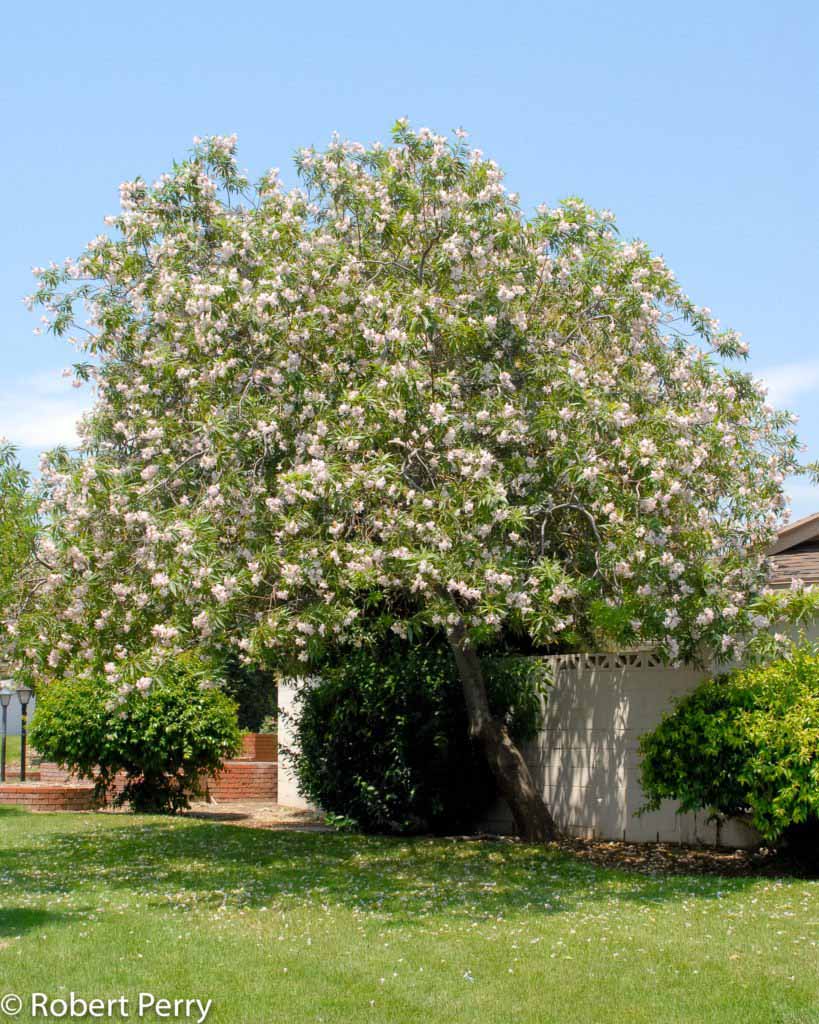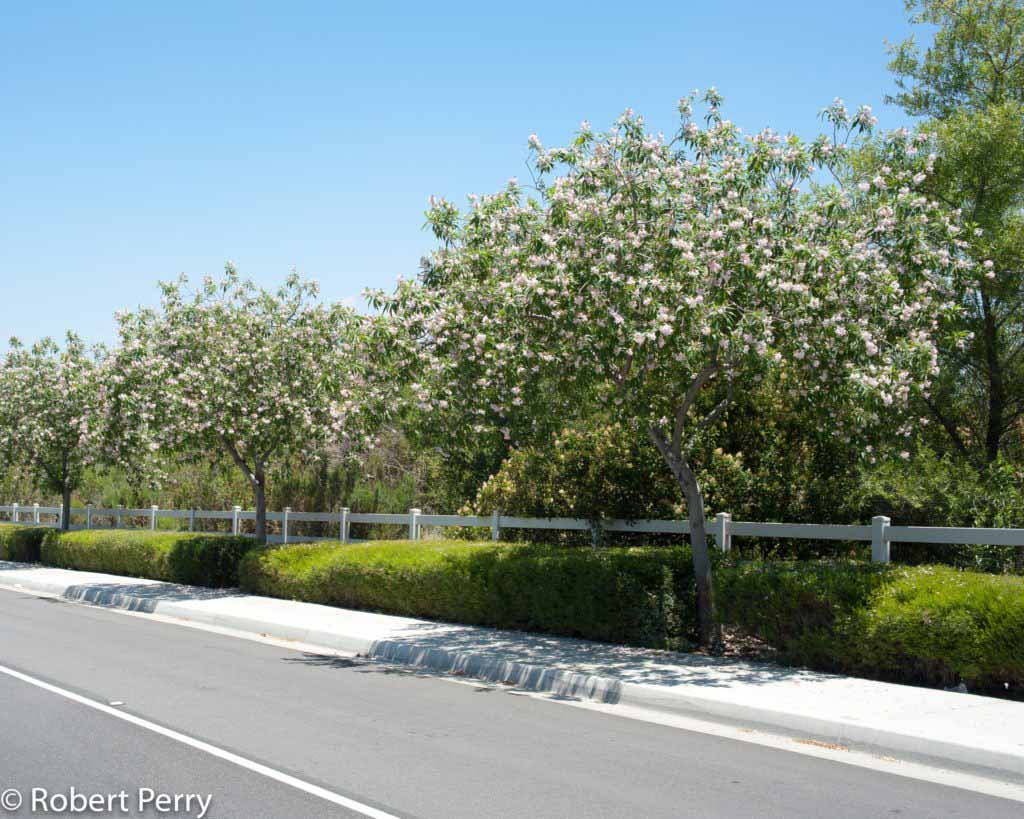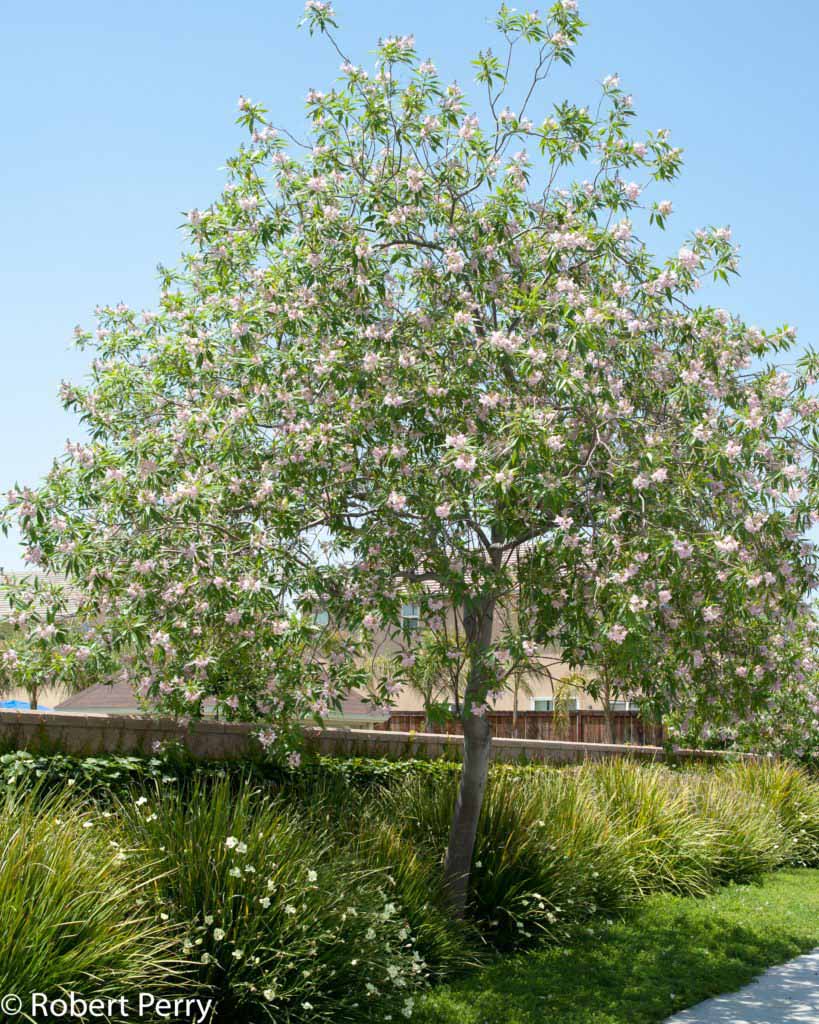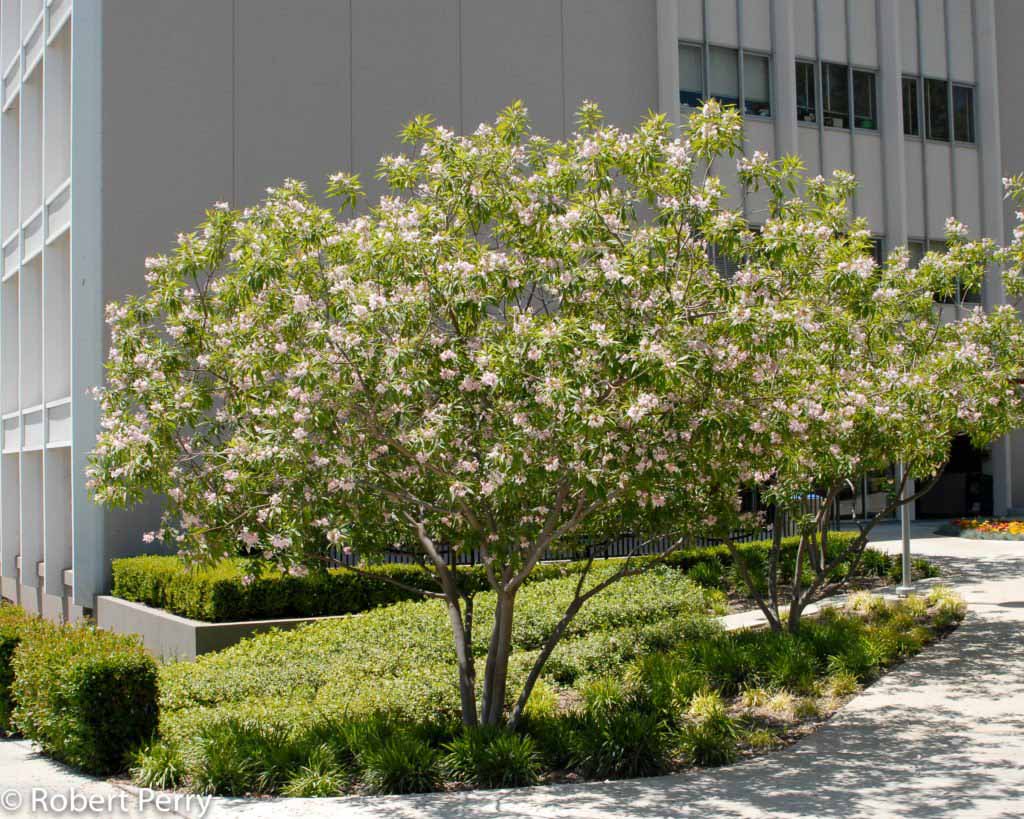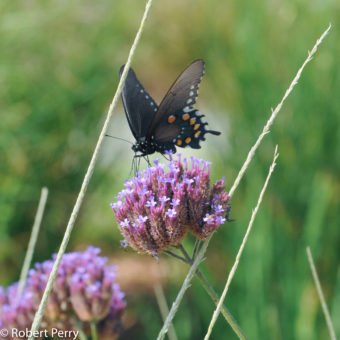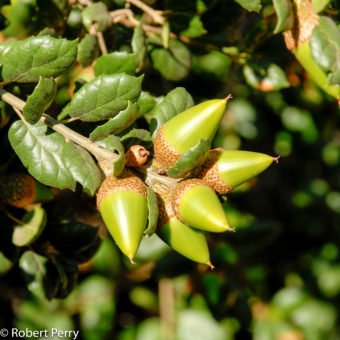Plant Type: Tree
Foliage Character: Winter deciduous
Habit: Upright, Mounding, Low-branching
Growth Rate: Fast
Foliage Color: Medium green
Flower Color: Pink, White
Flower Season: Summer, Spring
Soil Adaptations: Well-draining soil, Loam, Clay
Exposure Adaptations: Aridity, All day sun, Heat, Frost, Drought
Function: Raised planters, Parks and open space, Hummingbird plant, Flowering accent plant, Commercial spaces, Civic spaces, Banks, Background plant, Attracts bees, Attracts butterflies, Wildlife value, Specimen, Shade Tree, Screening, Residential spaces
Height: 20 ft. – 30 ft.
Width: 20 ft. – 30 ft.
The Pink chitalpa is well adapted to all parts of the Inland Empire where it can be sustained with normal winter rainfall and low amounts of summer water. Deep watering is recommended from spring through fall to sustain the best flowering performance and help maintain good foliage character. It should be noted there are several winter months marked by an asterisk (*) when rains can provide sufficient moisture and irrigation is not needed. The high and low range of moisture indicates it can grow with varying amounts of water depending upon exposure conditions and size.
| |
Jan* |
Feb* |
Mar* |
Apr |
May |
Jun |
Jul |
Aug |
Sep |
Oct |
Nov* |
Dec* |
| Runs per Month |
0x to 2x |
0x to 2x |
0x to 2x |
1x to 2x |
1x to 2x |
1x to 2x |
1x to 2x |
1x to 2x |
1x to 2x |
1x to 2x |
0x to 2x |
0x to 2x |
| Inches per Run |
1″ |
1″ |
1″ |
1″ |
1″ |
1″ |
1″ |
1″ |
1″ |
1″ |
1″ |
1″ |
| |
| Inches per Month |
0″ to 2″ |
0″ to 2″ |
0″ to 2″ |
1″ to 2″ |
1″ to 2″ |
1″ to 2″ |
1″ to 2″ |
1″ to 2″ |
1″ to 2″ |
1″ to 2″ |
0″ to 2″ |
0″ to 2″ |
Range of supplemental summer water: 7"-14"
Range of supplemental winter water: 0"-10"
| |
0″-2″ |
0″-2″ |
0″-2″ |
1″-2″ |
1″-2″ |
1″-2″ |
1″-2″ |
1″-2″ |
1″-2″ |
1″-2″ |
0″-2″ |
0″-2″ |
| |
Jan* |
Feb* |
Mar* |
Apr |
May |
Jun |
Jul |
Aug |
Sep |
Oct |
Nov* |
Dec* |
For more information on how to use this Irrigation Schedule and Graph, follow this link.
For information how to calculate your irrigation system’s schedule and precipitation rate, please follow this link.
Prune when young to develop desired long term structure. While Chitalpa may be grown as either a single or multi-trunk tree, they really naturally want to grow as multi-trunk trees or large shrubs. Single trunk trees often take on a strong lean in the landscape or as street trees, so be prepared to accept this if you want a single trunk tree. Your best chance to have a straight trunk will be to carefully and property stake the tree, loosening and then removing the stakes carefully as the tree is able to support itself and gain it’s own strength. Main pruning should be done in winter when dormant. Remove suckers (vigorous shoots growing from the base of the tree) as they form, any time of year (D,S).
References

